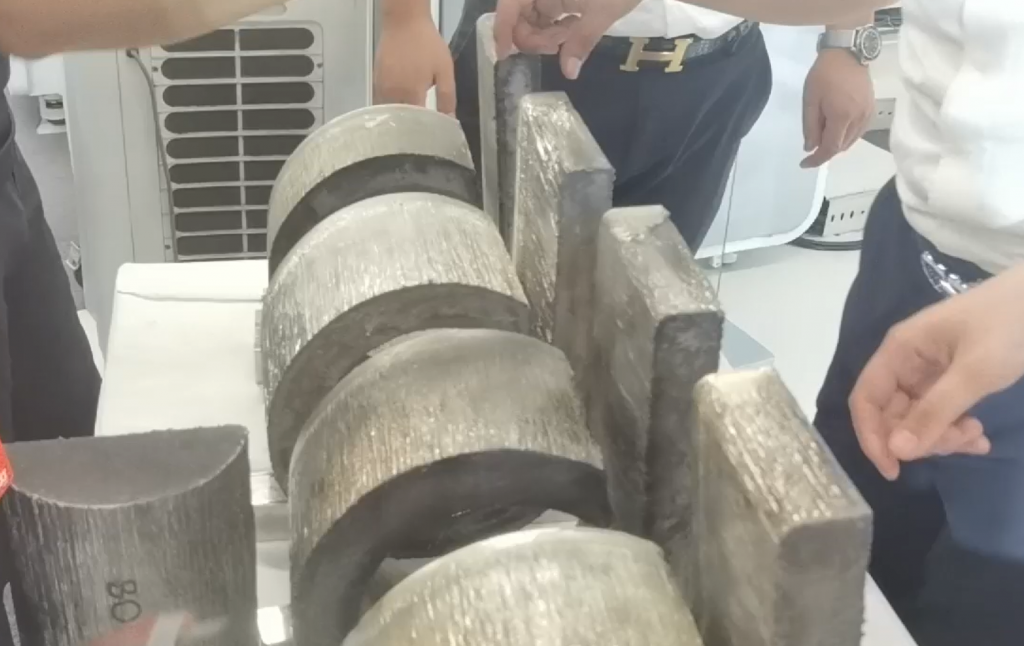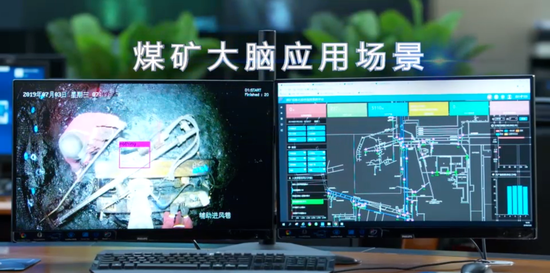
Humpback whale Hardwood Island


The Chinese Foreign Ministry, for the first time, disclosed that the US had asked “dozens” of countries to detain Huawei CFO Meng Wanzhou but only Canada accepted the request, and the decision has brought huge damage to China-Canada relations. Chinese experts said the Canadian government should safeguard their country’s judicial independence, rather than let Washington’s political pressure “pillage” the legal system of Canada.
In a wide-ranging interview published on Friday with Canadian media The Globe and Mail, Lu Kang, director-general of the Department of North American and Oceanian Affairs of the Chinese Foreign Ministry, disclosed this information.
Meng was detained in Vancouver on December 1, 2018, after the US issued a warrant for her arrest. In the weeks prior, Meng travelled to France, Britain, Ireland, Poland, Singapore, Japan and Belgium. Lu said that many of the countries that the US spoke to were “American allies” who have extradition treaties with Washington, according to the Globe and Mail.
“Do you know how many governments the US had requested to extradite Madame Meng Wanzhou before the Canadian Government? More than dozens,” and the Canadian government should answer why Canada is the only one to execute the ridiculous request made by the US while the others didn’t, Lu said in the interview.
Li Haidong, a professor at the Institute of International Relations at the China Foreign Affairs University, told the Global Times on Saturday that it seems like the Canadian government has totally given up the country’s judicial independence and sovereignty to the US, and China needs to learn that it cannot underestimate the loyalty and compliance that the Five Eye Alliance members show to the US.
The unusual cooperation or submissiveness that Ottawa showed to Washington has actually harmed the country’s own interests, as it was totally unnecessary for Canada to sacrifice so many interests of China-Canada ties to serve US political and strategic purposes, Li said, adding that hopefully, the information could help the Canadian public and the lawyer team for Meng’s case to learn more about the political facts behind the “lawsuit.”
The Globe and Mail asked Lu to provide evidence and a source of the information, but Lu said “Actually it’s for the Canadian side to tell the whole picture to the Canadian public.”
A Beijing-based expert on international relations who requested anonymity told the Global Times that it would be unprofessional and inappropriate if China named those countries who turned down US request to arrest Meng.
“Because this would create unnecessary problems to bother those countries who uphold the bottom line of their own judicial independence, and the US would be humiliated and get angry” if China tells the world “how many US allies don’t want to serve US hegemonic requests, and only Ottawa unwisely showed its unique loyalty to Washington,” the expert said.
Li said before the recovery of China-US ties and a policy shift from the US on Huawei, Ottawa would unlikely make a new positive decision independently on the case of Meng, and “we hope the Canadian government remembers it is an independent country, and its judicial and diplomatic independence should not be pillaged by political pressure from the US.”

On September 4, Shenzhen Maxphotonics Co., Ltd. (Chuangxin Laser) and Shandong Jinan Bodor Laser Co. reported that the 40kW multimode continuous laser sets the record of the highest power of the same kind of industrial laser cutting, equipped with a single module 6kW also simultaneously break the highest record of the domestic industrial utility single mode.
https://play.yunxi.tv/livestream/flash?id=e757e5ed77e143e594280206f72e9558#/




China successfully launched a reusable experimental spacecraft with a Long March-2F carrier rocket from the Jiuquan 酒泉 Satellite Launch Center in Northwest China on Friday. The spacecraft will return to Earth after some time in orbit, designed for peaceful use of space.
9-6-20 After flying in orbit for two days, China’s reusable spacecraft, which was launched from Jiuquan Satellite Launch Center on Friday, successfully returned to its designated landing site on Sunday.




China National Nuclear Power Co., a unit of China National Nuclear Corp., said fuel loading started at the Fuqing No. 5 reactor 福清核电5号 , the first to use the domestic technology 华龙一号(原称ACP-1000), on Sept. 4 after securing an operating license from the nation’s Ministry of Ecology & Environment.





At the top of the rankings, China’s Tsinghua University becomes the first Asian institution to break into the top 20, coming in at joint 20th.
But the real rumblings are further down the rankings, with China doubling its representation in the top 100, from three last year to six this year, and now seven in the top 200, compared with just two in 2016.

5G是当前科技竞争的关键赛场,美国正在建立数字霸权,想从根本上遏制中国的技术创新。未来最坏的可能是从技术标准研发到全球产业链会割裂成两个系统。即使到了那一步,我们也要成为先进的那个系统。
“中国比美国在5G上领先,这也是中国第一次在通用技术领域实现了超越。”华为副董事长、轮值董事长郭平近日在一次线上分享时表示,“其中一个背景是美国在5G的决策选择上犯了错误,所以它需要时间,替代和赶超来弥补落后。”
郭平认为,这也是华为为什么受到美国如此严厉的制裁打压的原因。
作为数字经济的一个基础因素,5G为什么被拔高到如此地位?
移动通信的发展过程,大约是十年一个周期。每前一代比后一代应该都有一个十倍速率的提升。但目前香农定律已经逼近极限了,还没有理论突破,所以5G几乎就是当前移动通信的极限所在。
而5G如同新时代的电力,“就像100多年前电从用于照明走向电气化一样”。5G低时延、高可靠的应用,面向工业控制、无人驾驶汽车、无人驾驶飞机,都有无限的应用可能。
2020年是5G规模商用的元年。5G基站已经开始覆盖中国主要的大城市,例如,在深圳已经建成了4.6万个基站。当前,华为已在山西煤矿、湖南钢厂、欧洲航空服务公司和西南农业等领域打造了标杆性的5G服务,下一步重点则是,把5G的基本能量在各行各业中释放出来、创造价值。
但当前,中国科技发展面临挑战、需要克服困难。郭平希望,即使未来世界分裂成了两个系统,我们仍然能够成为有竞争力的先进的那个系统,而不是被人封闭的割裂的那个系统。
以下为演讲全文(有删减):
大家知道这些年来,在特朗普和美国高官的广告轰炸下,全天下都知道5G了。这个话题也引出了很多其他的事件,先是对华为的围追堵截,再到把几十家中国科技公司列入了实体清单,最近呢,又对一些中国的互联网公司要出手。今天的话呢,我就从5G聊起,和大家分享一下中美科技当前的一些状况。
5G是新时代的电
5G的发展过程,就是五代移动通信的发展过程,大约是十年一个周期。每前一代比后一代应该都有一个十倍速率的提升。在演讲之前征求的问题中,有人问6G是什么?大家知道通信有一个基本的定律叫“香农定律”。如果要实现6G的话,需要先有理论突破。很不幸的是,现在香农定律已经逼近极限了,还没有理论突破。所以6G在哪?可能是所有人还在积极寻找的地方。
那么,从5G的发展过程中来看,它有什么特别的意义?为什么受到那么特别的关注?这是一个值得大家慢慢思考的问题。我个人看来,从1G到4G,基本着眼点是解决人和人的沟通问题。人和物、物和物的连接,是从5G才开始打开。
在某种程度上,5G所代表的是一种通用的技术。就像是电。最早电的出现是用来照明的,但是100多年前,我们进入电气时代绝不是因为用来照明的电,而是电进入了千家万户,各个行业进入了电气化。对于5G来看,过去40年的发展我们解决了人和人沟通的问题,不管是语音、数据还是图像。
5G开启了一个特别的机会,就像100多年前电从用于照明走向电气化一样。5G使新时代的电力变得有无穷多的可能性。
简单来看,5G在定义标准的时候,有三个场景,第一个是上网的速度;第二个是海量的连接,理论上来说,全世界的每颗沙子都可以被连接上。应该说也会带来一个非常精细的管理机会;第三个产品是一个高可靠、低时延的应用。
所以,5G这种低时延、高可靠的应用,面向工业控制、无人驾驶汽车、无人驾驶飞机,都有无限的应用可能。这三个场景对应着5G的几个子标准。所有5G的运用,就是围绕着这三个场景在各行各业的应用。
所以我再重复一下,5G本身是一种技术,是一种新时代的电。也许发电的人挣不了多少钱,但是把电应用到各行各业的人,做家庭电气化的人可以挣到很多钱。
5G会如何改变传统行业
我可以简单地讲几个例子,给大家一个概念,5G跟行业的结合能带来什么?
首先看看我们跟山西一家煤矿的合作,在500多米深的矿井建了一个5G网络。大家知道煤矿井下的条件是非常复杂的,为了加强管理,领导要带班下井。但是实际上靠领导带班也不能解决问题,因为数据上传下载的要求非常高。受各种限制,装几百、几千个传感器也只能做一些检测,不能实时监控,也不清楚里面到底做了什么。

来源:华为
华为和煤矿的合作伙伴建立了防爆的5G设备,井上和井下可以进行高清的视频通话,井下的状况一目了然,清晰视频同时回传,也可以实现远程的控制,看井下就像看地面,这个在以前是完全不可能的。在这个基础上,大家可以想象,煤矿的采掘无人驾驶、运输车辆无人驾驶等等,可以极大地提升煤矿的效益,同时也改善员工的工作环境。这是一个在煤矿的应用。其实类似这样的,在我老家江西的铜矿里面也实现了无人采掘、24小时采掘。
我们再看一下钢铁行业。

来源:华为
这是湖南一个钢厂的生产流程。大家知道钢厂里面充满了噪音、粉尘、高温。有了5G,可以实施远程操作,一个人可以操纵三四台天车,改善了工作环境,提升了工作效率,而且钢厂的生产效率也明显地提升了大概20%以上。据我所知,深圳、上海、青岛,各个港口原来的轮胎吊也都是要人在高空操纵的,现在可以通过5G轻易地在地面舒适工作。
第三个例子来自欧洲航空服务公司,采用5G的技术来提升航空维保的效率,5G来进行远程检查。飞机维修以前是要工程师到现场去出差几个月,有了5G检查以后,工程师就可以通过高清的4K、8K视频实时检查,预计可以节省78%的成本。
5G还可以进行虚拟设计。以前工程师至少要花几个小时去下载3D的建模,5G下载速度可以达到1.5Gbps以上,工程师可以随时很轻松地下载3D模型,进行协同设计,发现任何可能的冲突点,整体的设计效率可以提升百分之几十,而且总成本也是提升50%以上。
我们再看农业。
5G除了在煤矿、港口这些工业区域增效降本,在农业方面也可以发挥巨大的作用。举个例子,西南的一个省,原来他们的甘蔗品质需要找专家来看。收购的老板不放心,怕有人放水,把三级的甘蔗说成是二级的;农民兄弟也不放心,怕被人为压低品级。但是通过5G高清摄像头,把专家的经验放一段视频录上去传输到云,人工智能就可以自动识别。而且把专家的工作转换成了知识,不断的积累学习。这些都是目前已经用上了的例子。
根据Jason A的报告,未来移动行业的新增市场62%的新增机会是在B2B的,也就是在行业里面的发展。
5G的发展也是非常迅速的,现在全球已经建了90多个网络。中国今年是5G规模商用的元年,基站在中国主要的大城市、经济发达城市已经提供了覆盖,比如在深圳已经建成了4.6万个基站。所以,华为也和我们的运营商伙伴、工业业务伙伴确定,下一步的重点是把5G的基本能量释放出来,真正在各行各业里面释放出它的潜能,创造价值,使5G真正为社会生活、为各行各业的发展提供实实在在的贡献。
5G是科技竞争的关键赛场
有一个事实是,中国比美国在5G上领先,也是第一次在通用技术领域实现了超越。
这里引用了很多公开的材料让大家来探讨和了解5G背后的故事,和中国科技发展所要面临的一个挑战和我们要克服的困难。
我想大家都能够在网上查到,美国国防部2019年4月份出的一个报告。美国国防部创新委员会谈到了5G的价值,从无人驾驶到智慧城市,甚至包含虚拟作战,应该说美国对5G的价值是给予了非常高的肯定。
报告里面也说到了美国的专家让美国进行了错误的路线选择。它所谓的毫米波是需要和WiFi一样密集建立基站的,但是在美国这样地广的国家基本是不可能的。第一个是成本,第二个它的这个频段被美国军方用了。导致美国是全世界第一个宣布做5G的国家,但是一直没办法进行商用,为啥?没有频段。这个报告说,美国专家把美国政府带到沟里去了,它跟全世界走了一个不同的方向。
美国国防部也很清楚。怎么办?第一个要在低频追上中国,在供应链里面把中国元素赶出去。美国在5G的决策选择上犯了错误。所以,它需要时间替代和赶超来弥补正面的落后。
那么这个东西落后也就落后,有什么关系呢?我们沿用了美国现任司法部部长威廉·巴尔今年2月份的一个演讲。巴尔先生曾经是我们这个领域内美国最大的运营商的高级副总裁,他还是中国对策委员会最核心的成员,可以说是对中国、对通信技术有非常深刻的了解。
他在演讲里面讲到,美国有三样东西保证美国霸权:美军、美元和科技,而根本是美国科技的领先。巴尔认为,如果中国5G利用市场规模优势领先,在半导体领域也会产生连锁反应,所以,他要美国所有的盟友、各种机构一起加入对中国的斗争。巴尔还在他的演讲里面说到,美国在19世纪以来,在所有的关键科技领域从来没有落后过,都是美国领导世界,那么,在影响到未来的一个关键的技术领域内,美国落后了,这是不得了的事。
美国现任商务部长威尔伯·罗斯说,美国未来的繁荣取决于在技术方面的战略优势。科技一直是美国政府最核心的战略,5G只是处在风口浪尖。实际上,关于未来的竞争,他说,中美的竞争不是19世纪帝国间领土和资源控制权的竞争,焦点不是军事人员或者是领土扩展,而是技术。现在美国面临失去它在科技领域竞争优势的风险,后果应该说是极其消极和深远的。
美国最著名的智库布鲁金斯学会今年做了一系列的报告,“走向全球的中国”,讲到科技竞争的关键赛场是数字技术。在这份报告里面,他明确是芯片和5G。美国也梳理了要赢得这个关键领域的几个关键动作是盟友、研发、人才、市场。5G之外更激烈的竞争在于人工智能。后面写到美国长臂管辖的一个新的进展,它要利用全球所有的人才和技术手段,把数字技术的竞争对手排除掉。
美国如何建立数字霸权
科技领域内,最关键的是数字技术。去年华为被制裁了以后,我们很多国内的公司也由着眼于满足做应用层往深度投资。我们也希望美国的这个行为能让我们弄明白,仅仅是靠应用水龙头,它随时都会关上。
利用网络空间加速经济发展,削弱了美国的相对优势,美国要怎么巩固它的全球领导地位?目前的做法是,不需要、也拿不出别人不安全证据的情况下,直接政治化。这可以理解成美国在新形势下,对中国、俄罗斯等国新的数字冷战,要全面打击和遏制中国、俄罗斯等国家发展数字化。
美国建立数字霸权还有具体的做法。
大家知道,美国在全世界建立了一个长臂管辖原则。长臂管辖权传统上有两个,一个是贸易的长臂管辖,第二个是金融的长臂管辖,最新的第三个就是数字霸权。2018年3月份推出的云法案允许美国的公有云和其他的各种互联网服务提供商,在海外任何的机构跟他们有最小的连接,那么这些数据都归美国所有。
你可以理解成网络是美国的,数据归美国,再加上人工智能,可以说以后美国将会成为世界的大脑,拥有所有的数据和连接,别人就是一个手和脚。
一个世界是否需要两个系统
大家可以看到,中美最大的差异或者根本的差异在于基础的科学创新。美国认为,如果他们能在基础创新上抑制中国,就能在技术领先上拉开差距,从而获得全面的优势。
1930年,西方就有李约瑟问题,提到为什么中国那么强大就没有出现过科学和工业革命。我记得钱学森去世之前,也有钱学森之问。这也可以理解为什么华为的创始人不断的去呼吁要加强教育,特别是基础教育的背景和最深刻的原因。
美国相关的机构达成了一致,未来要长期从根上遏制中国的技术创新,瞄准科技关键领域来打压中国的士气。
具体来看它就列出了四种方式:第一是技术创新,识别出了技术流入中国的十种途径,未来将要求全部关闭;第二是供应链的管理,美国国土安全部要牵头制定价值链的风险管理政策,参议院成立了联邦采购供应链安全委员会,他被授予了非常广泛的权利;第三个是技术的打击,对于威胁美国核心的中国领先的技术领域要进行重点打击;第四个是技术跨越,美国人认为投资自己,加强美国自己对基础领域的研究,拉开对手一两代技术的差距。比如说现在他们在规划的量子计算研究,未来的通讯逻辑也都是这样的一个例子。
最近,有人提到未来这个世界One world, two systems。从技术的标准研发到全球产业链会割裂成两个系统,我不知道这是不是不可避免的,但我们是不是甘心让它发生,是不是甘心这两个system里面我们会处于一个落后的位置。
在竞争的系统里面,我希望,特别是年轻一代人,要靠我们自己的努力,在全球的竞争里,有能力维持一个系统。如果分裂成了两个系统,我们仍然能够成为有竞争力的先进的那个系统,而不是被人封闭的割裂的那个系统。
我相信在接下来的时间里,我们所有从事方方面面的朋友们都有很多的机会,通过我们自己扎扎实实的工作改变别人给我们设计的命运,也改变自己的命运,改变我们行业的命运,创造更好的机会。
